Antares, probable next supernova
The distance to Antares
At the end of 2021 I wanted to abandon the whole study because I had no certainties about the star Betelgeuse that would explode. The various brightness graphs matched events on earth up until the eruption of the Huaynaputina volcano. However I moved the graphs they never matched. So the 2019 event was the only one that could have caused the star to collapse. But it didn't happen. Furthermore, the drop in brightness that is occurring in 2024 also coincides with events on earth after the Huaynaputina eruption.
Some time ago I had checked the crossings of the star Antares with ancient supernovae that had exploded and I had found that the supernova Sn1054, with the distance measured by the Astronomers of 550 ly, the crossing of cosmic rays and the probable collapse of Antares would have occurred in 2099. In this calculation I used the same speed as the cosmic rays that impacted the earth with SN1572.
So it's a slightly imprecise calculation. But there are some coincidences that made me think. First of all, the distance to Betelgeuse has always been calculated in a greater way than the result with the methods I have used. Over time, however, with improving technology, the distance to Betelgeuse has always been “adjusted” by placing it ever closer to the earth. In fact, and at that time those data were not yet available, the last distance was 408 ly. The one I calculated was 491 and the penultimate one was 540 ly.
I realize that it is very difficult to calculate the parallax of a star that is not point-like, then at that distance it is an incredible job. But in the end, precisely to explain the decline in 2019, I opted for the one calculated with my system as the effective distance. The same thing is happening for Antares, the distance of 540 ly is considered approximate and I believe it is very difficult to measure. So it is very likely that the one I am calculating is also correct or feasible.
Secondly, the magnitude graphs of the 2 stars match 100%. Not only the graphs but also the distance seems to be both very similar. I don't know how or why but Betelgeuse's 2019 dim brought me here and to understand many things I never could have understood. From my point of view it is no coincidence.
Below I report both the calculations of the crossings of the cosmic rays of the two stars (SN1054 at Antares) based on the known distance given by scientists and based on the “adjusted” distance to correspond to December 2026 and also the comparison between the timelines of the magnitudes from 1980 of Antares and Betelgeuse.
Now, logically, if the variations in brightness of Betelgeuse, before being hit in 2019, are very similar to those of Antares, then it means that cosmic rays from Sn1054 are already “hitting” it. Furthermore, by logic, if the distance to Betelgeuse has always been calculated in excess, then it is very likely that the right distance is precisely given by the crossing of the cosmic rays arriving from the supernova of 1054. The average gap between the curves is around 7 years.
So it seems that Antares will be hit by cosmic rays from SN1054 in December 2026. I had done these studies in 2021 and obviously I had no certainty because the explosion of a supernova is still a rare event, let alone a supernova at 400/500 ly away.
The first sign I had to see to understand if I was going in the right direction was the decrease in brightness that the star should have had in the periods preceding the greater flow of cosmic rays. In the case of Betelgeuse there have been 3 decreases in magnitude in the space of 5 years. For Antares it is a little different because it has different periods of variability but, despite everything, the evidence of the decline has arrived, not high, but in line with that of Betelgeuse: 1.2 Magnitudes. Then another confirmation arrived.
If the decline continues in a linear way then I think that the closer 2026 gets, the more likely there will be that all the calculations are right and that there will be a crossing of cosmic rays with Antares.
The position of Antares in the Galaxy
Not only are the two supergiant stars at a very similar distance from the Earth but they are both located in areas of the Galaxy with a high concentration of stars and galactic dust. However, the position of the supernova star from which the cosmic rays arrive is very different. Below is the disposition of Antares with respect to the Sun and the Crab Nebula. I remind you that SN1054 was seen by Chinese astronomers in 1054, then its light reached Antares about 490 years later and if the effect of cosmic rays is to make it explode, its light will reach the earth after another 490 years, that is, in these periods.
Probability that Antares will go supernova
In this case the similarity between Antares and Betelgeuse is a little different: Antares is a star with a metallicity of +0.602 while Betelgeuse is +0.05 which means that it has less hydrogen and more metals and is more likely to explode as a supernova .
Antares has always been seen as a red star over the millennia while Beltegeuse has been given different colors which indicates Antares ran out of hydrogen for nuclear reactions a long time ago. Even the supernovae that have crossed or will cross the two stars are different: SN1054 was one of the brightest supernovae in the last 2 millennia. Chinese astronomers report that it had the brightness comparable to the Moon.
SN1054 was a type Ia supernova while SN1572 which struck Betelgeuse in 2019 was type Ib/c i.e. less powerful (at least 6 times brighter). This made me assume that there is a much better chance of Antares going supernova than there was with SN1572 on Betelgeuse when it caused the 2019 dim.
I calculated, again in 2021, that, with these data, Antares will decrease in brightness until it becomes a star of magnitude +10, that is, visible only with rather powerful telescopes. I initially calculated the lowering period as Betelgeuse, that is, approximately one month. So a month would already be enough. With a radius of 472 million km in a month at 600,000 K/h it would all collapse.
I repeat again, all these calculations will be published in separate articles in a few months.
But Sn1054 is a type I supernova and therefore has a longer duration of luminosity and consecutively also of cosmic rays. From the graphs, the type I supernova has a shorter and brighter luminosity curve. So the probable decrease in brightness of Antares will be much more marked and perhaps even last longer. If it happens like this, in those days, everyone will know that it is about to explode.
Some time ago I calculated the effect of cosmic rays on the nucleus of a star. In particular, I calculated the flow that is probably passing over Antares. Unfortunately I didn't have time to finish and have the certainty or at least a percentage to have an idea of the mathematical probability that the star will explode.
From what I could initially understand is that the chances are very high. Now I just have to wait to see if the brightness curves will match those of Betelgeuse before the “dim” of 2019. Anyone who has the mathematical skills and knowledge of Astronomy and who can help me is welcome.
Timeline of the probable explosion
I would like to point out that what I will write in the next paragraphs is a hypothesis, the probabilities as far as I'm concerned are many but I realize that certain topics are very delicate and therefore everyone will be able to “see” it in their own way. The famous “science”, the one with the “h”, the one they flaunt as an absolutism has become a dogma to be believed in 100%, like a totem of those used by ancient peoples. But true science is that which has doubts and hypotheses which are then proven over time.
One of the issues that I still don't fully understand is the probable emission of neutrinos and cosmic rays before the star explodes. For example, during the SN1987A supernova, at that time, just before the explosion, neutrino detectors all over the earth reported a considerable increase. As regards earthquakes, it is very difficult to find confirmations, there are too many and also of various depths. However, as regards volcanoes, I noticed a considerable increase after 2019 culminating with the eruption of Hunga Tonga in December 2022, 2 years after the star's decline. There is currently no certainty of the correlation.
However, it is very likely that before the explosion the earthquakes but above all the eruptions will increase also because the Solar System is in a position where cosmic rays pass with greater intensity. A couple of months before the explosion which I imagine will be around December 2026 (the connection with this date is explained in the Biblical References>>Time Calculations section), the star will begin to gradually decrease in brightness, perhaps less suddenly than Betelgeuse.
In mid-December the calculations I had made will lead it to have a brightness, as I wrote in the previous paragraphs, up to +10 and it will no longer be visible to the naked eye. Some time ago I had tried to understand how it could have collapsed and what chances there would have been for it to explode. But I had to postpone both this work and that of calculating the neutrino emission before the explosion. Too much data to process and too much time.
Unfortunately I also have to follow my secular job and besides there is no more time, I have forced myself to warn everyone else. For this reason for now you will not find these studies on the site but I will certainly do them at the end of 2024 and publish them in the “themes” section.
I repeat here that Antares is much more likely to explode than Betelgeuse because it is “older” as a star and the supernova rays that will hit it are from 6 to about 40 times more energetic. So these are not far-fetched hypotheses that I am making but they have a high probability of coming true.
The fact is that, after the sudden decline which will last about 2 months, the star, no longer having the strength in its core to expel the material, will inevitably begin to contract until it reaches a pressure and temperature in the core such as to be able to reactivate the atomic reactions. As is known, this will happen all at once and the star will explode.
I remind you that everything I am writing follows a logic based on what I have been able to understand from the Bible. By necessity there will have to be a supernova which will cause the volcanoes to increase and which, as the Bible says, will obscure the Sun and Moon. Furthermore, the Bible always speaks of a great earthquake, and a great one means that it will affect the whole earth.
Therefore, according to Biblical calculations, it will most likely happen around December 9, 2016 and will appear in the sky, but in that period it will be “covered” by the light of the Sun. The brightness will be like that of the full Moon but with a luminous intensity never seen before first because it will be punctiform. Precisely on December 9, 2026 it will be visible from Jerusalem at 11:31 am and will form a scalene triangle with the Moon and the Sun, with the Sun above and the Moon and Antares below. The Moon will not be visible, because it will be the day of the new Moon but it will probably have a “halo” caused by the X and Gamma rays arriving from the supernova. Probably even the Sun will not always have the usual color due to the X and Gamma rays of the supernova.
Be careful, these calculations are intertwined with each other and are like a puzzle that must fit together. The reference luminosity graphs between Betelgeuse and Antares have a gap of approximately 7 years. From December 2019, if we add 7 years, we arrive at December 2026. So they are not “out of the blue” data or deliberately put at random for psychopathic reasons, but they are real. Furthermore, it seems that someone wanted to make sure that they could warn those who would listen. So obviously everyone is free to draw their own conclusions, but these are the data: mathematics doesn't lie. My only doubt is myself, I know I'm imperfect and I can make mistakes but I couldn't help but publish what I came to know.
G – Position of the supernova SN 1054 (Crab Nebula) and Antares in the galaxy. Note the image created with Stellarium which depicts the positions of the Sun, Moon and Antares on 09 December 2026 forming a scalene triangle. SN 1054 is very distant, about 6500 LY.
H – Image created with Stellarium depicting the probable view of the supernova Antares in conjunction with the Sun and the Moon. A halo should be visible around the Moon.
The position of the earth in the Solar System
The position of the Earth in the System In the period of the end of 2026 the arrangement of the planets in the Solar System will be very particular: all the planets outside the Earth's orbit will be together in an arc of 180 degrees. While from April 2027 until July 2027 all the outer planets will still be in that 180 degree arc minus the earth which will be on the other side.
We know that the giant gaseous planets outside the Solar System act as a “shield” against Galactic radiation with their strong magnetic field. In fact they serve to compensate for the weak Solar magnetic field at those distances at which these planets are located. But if they are all on the opposite side of the earth they will not be able to protect us from harmful radiation.
This seems like a perfect crime because all the data leads to the supernova explosion in December, when only photon rays, visible light, X-rays and Gamma rays will arrive, but the cosmic rays that travel slower will arrive later. In the next paragraph I explain the probable times and how they match what is written in the Bible. Solar
5 images that highlight the position of the earth. In image L the earth is found with the rest of the planets moved to one side in December 2026.
In image M all the planets are always found on one side while the earth remains exposed starting from April 2027.
Photos I J and K indicate the position of the earth in the Solar System compared to Antares. Image K also outlines the orbit that the Earth will make around the Sun in that period. The gaseous planets which, thanks to their magnetic field, shield Galactic cosmic rays are all on the opposite side.
The arrival of cosmic rays
The photons of the supernova SN 1572 (B Cassiopeia) hit the earth starting in 1572 but the cosmic rays, which travel a little slower, arrived later. Based on the events, earthquakes and volcanic eruptions, which occurred at that time we can calculate the various speeds of cosmic rays.
Let's start with the supernova explosion in November 1572. On December 16, 1575, after approximately 1125 days, a large earthquake of magnitude 9 hit Valdivia, in Chile. At this point to calculate the average arrival of cosmic rays from Antares, if it were to explode like a supernova, just compare the distances.
As I wrote on the previous page “Betelgeuse (dim 2019)” the distance to SN1572 is approximately 3560 ly (±360 AL). If we make the ratio 3560 ly (±360 ly) / 493.8 (Distance to Antares recalculated) => from 138 to 169 days. From December 9, 2026 it becomes April 26, 2027 or May 27, 2027. April 22 is the 15th of Nisan, i.e. the Jewish Passover.
We must take into account another variable, however, which in reality we cannot calculate in any way precisely: the cosmic rays from Antares will arrive faster than those that arrived from SN1572. Antares is surrounded by many galactic clouds, but SN1572 also becomes many due to the distance between us and the supernova.
This issue of cosmic rays traveling directly is a controversial subject, much criticized by astronomers. But I would like to remind you that cosmic rays from the Sun travel in a straight line and pass undisturbed until they reach the limits of the solar system. Their speed is minimal compared to that of cosmic rays from supernovae, about 750 times slower.
So to recap the comic rays from the probable Antares supernova which could explode probably on 09-12-2026 could arrive from the end of April to May 2027. I remind everyone that it is a hypothesis, but a hypothesis validated by many other data.
Damage to the Sun and other planets
To understand the damage that Antares, a probable supernova, could cause to the Sun, it is also enough for us to compare what ancient supernovae like SN1572 caused to the solar cycle. The solar cycle in fact changed radically and today is called the “Mauder minimum”. Note that on the Wikipedia page of the Mauder Minimum there is a box dedicated to unsolved problems in Astronomy.
The Sun, charged by cosmic rays from SN 1572, lost energy. Cosmic rays at relativistic speeds can vary the electric field until they reach the core of the sun. But be careful, it is not the particle that arrives in the nucleus, but the electric charge it carries. I'm not a scientist but I know that nuclear reactions need many neutrons in order for the atoms to get closer together until they fuse.
If an external electric charge arrives, the “fusion potential” of the star changes and, with protons at relativistic speeds, if the star is not one of the young and strong ones like our Sun, it risks darkening. The solar corona is also affected and the star thus becomes fainter.
Now if the protons arrived from the probable Antares supernova, at least 10 times closer and therefore 100 times more intense, I imagine that the sun could also become relatively darkened, in the sense that it would lose various magnitudes. But the worst thing would happen later: since it is a young and very stable and strong star, immediately after the arrival of the cosmic ray beam from Antares, after a few months it would become much brighter than normal.
This “ballet” could last for years. In the case of Sn1572 it was 27 and then the flux dropped regularly, in the case of Antares as a probable supernova, it would be about 7 years (I will write how I calculated it later).-
The planets themselves would undergo incredible cataclysms:
I imagine an almost complete absence of the magnetic field in the gaseous planets, warming of Mars both due to cosmic rays and due to the sun with melting of the polar caps, hurricanes doubled on all the planets, and flares due to relativistic particles.
We have seen a similar scenario in a very limited way involving the planets of the Solar System during these 100 years and more of cosmic ray intensification caused by the changing position of the sun in the galaxy. “Strange” events have occurred on all the planets and even on earth there have been climate changes which we are still witnessing.
Effects on the asteroid belt
Between Mars and Jupiter there is a space in the Solar system full of Asteroids and in fact it is called the “Asteroid Belt”. The NASA website reports that the number of asteroids larger than one km is 1.1 to 1.9 million. I think hundreds of millions of smaller ones.
The force of gravity is obviously not influenced by electric currents and particles that travel at relativistic speeds (almost at the speed of light), but since all asteroids are composed mostly of heavy metals I imagine that the currents and tensions between them as they pass all these particles can make them undulate and probably change trajectory and orbit.
This is a theory but, since the probable Antares supernova will send out very powerful cosmic rays for about 7 years, there is a high probability that several asteroids could change their orbit and enter the inner part of the Solar System. We have many evidence of these “excursions”: the craters of Mars and the craters of the Moon and in planets without an atmosphere.
But since there will probably be many asteroids that will enter the inner part of the Solar System, there is a high probability that they will collide with the Earth's atmosphere and, if they are large enough, they could also enter and reach the land or the sea. We know the consequences.
Damage to the Earth
To understand how great the damage to the earth caused by the probable Antares supernova could be, it is enough to take the damage, at the level of earthquakes and volcanic eruptions, which occurred in 1572 and multiply them by a base factor which is 50/100 and then multiply it again by a factor of which goes from 3 to 5 caused by the fact that the Solar System is located in the Local Bubble area where there are no protections and by the position of the earth in the solar system, as written previously, which is not protected by the gaseous planets and by the Sun which it would lose almost all its magnetism.
A situation which would also last 7 years and be composed of alternating phases where, during the winter period the earth would be “covered” and “protected” in part by the gaseous planets, but immediately in the following six months it would still fully absorb the radiation, so for 7 approximately years.
The hypothesis I have always had is that of a supervolcano, probably Yellowstone which moreover has the caldera already full and raised, which would bring destruction throughout the USA and part of Central America. The worst thing about a supervolcano catastrophe is not the explosion itself, but the air that becomes unbreathable and poisonous for thousands of kilometers from the epicenter. Furthermore, a supervolcano would cause complete coverage of the sky caused by ash across the globe with very strong drops in temperatures even in the equator and crop losses.
An apocalyptic hypothesis but perfectly in line with what has happened over the millennia and which inevitably repeats itself and we have the proof. However, the USA would be brought completely to its knees and, due to the eastward Atlantic winds, a large part of Europe would also be affected.
But obviously it didn't end here: the events of SN1572, at least 3000/5000 Al distant, continued for at least 27 years with ups and downs.
Worthy of note are (the list is in fig. O): the eruption of Mount Billy Mitchel VEI 6 in 1580, the M 9.25 earthquake of the Aleutian Islands, Peru and Japan, 3 other large earthquakes Mag >9, many other Raung volcanoes , Ruiz, Hekla, Suwanosejima, Asamayama etc. culminating in 1600 with a large volcano Huaynaputina VEI 6 which caused temperatures to drop for years in the northern hemisphere, then again Peru 2 strong earthquakes and also Japan.
These are the known events, but 500 years have passed and many are lost or never reported. Events spread out over certain periods while other periods “seemed 'calm'”: 1574-76, 1580-90, and finally 1600.
Given this, we must expect hell on earth, because volcanoes make the air unbreathable and bring many famines and intense cold. The intense cold will most likely be alternated with periods of terrible heat precisely because the Sun would immediately recover from the strong shock received from the cosmic ray beams and could become very hot.
It must also be taken into account that probably many asteroids in the belt located after Mars would be “pushed” by the strong electric charges towards the center of the solar system. From where they are, to get to the center they have to pass through the Earth's orbit. Since millions and millions are already rotating around the Sun and already passing the Earth's orbit, there is a high probability that they will impact the atmosphere and if fast and heavy enough they could reach the ground.
The peak will probably be in 2034 when the greater force of cosmic rays will be unleashed. The power of the volcano or the resulting earthquake will be unique. A mega earthquake that will spread across the entire earth.
Unfortunately we will have to suffer a lot but, I repeat it is a hypothesis, this will only happen if Antares goes supernova.
Probable decimation of humanity
This is a very delicate topic but it makes us understand how “life” works in the galaxy. Since we have seen that supernovae bring death around them but also new life, we can already understand how civilizations evolve in the galaxy and, if they do not reach a “higher” level, they are destined for destruction. In fact, the destructive events will be so many and powerful that most likely no one will be saved, not even those who have been preparing for years.
Many have theorized the recurring extinction over the millennia caused by cataclysms involving the entire earth. These theories are right, everything happened regularly every tens of thousands of years, but no one has ever been able to say what the cause was. Now we know, there are “killers” of civilizations in all galaxies, “killers” who subsequently regenerate life and start again.
Living with temperatures ranging from -40° to +50° and without food and water and with poisoned air is practically impossible. This then lasted 7 years. We may be the best preppers in the world and super prepared but we are still made of meat. Regarding the effects of a supervolcano on the population, several studies have been done like this one where, speaking of Yellowstone, he says: “If a supervolcano were to erupt it would be a global catastrophe. It would instantly kill around 100,000 people and make most of it uninhabitable. of North America as huge amounts of ash and dust would be thrown into the atmosphere. It would trigger climate change that could cause a mini-ice age due to the amount of sulfur dioxide thrown into the atmosphere and reflecting solar radiation.”.
Below is a table with the list of damages caused by a supervolcano. We must keep in mind that it is all a hypothesis because these things have never happened to our civilization.
| Potential impacts on people | Potential impacts on the environment |
| Death and destruction - Over 100,000 people will die instantly due to the explosion and pyroclastic event. | Eruption - a supervolcano will eject at least 1,000 km3 of material (compared to 1 km3 for a normal volcano). This could include an ash cloud 25 miles high. |
| The ash clouds they would migrate around the world (reaching the UK in 5 days), covering the ground, clogging machinery, causing respiratory and health problems for people. Lahars (a destructive volcanic landslide or mudflow) would devastate entire communities. | Ash - Ash thrown into the upper atmosphere will circulate around the world and could cause a dark summer, in which sunlight does not pass through for at least a year. 1,600 kilometers away, the layer of ash deposited on the ground will be over 3 meters thick. Some of these will cause massive lahar flows. Global temperatures could drop by 3 – 5 degrees and remain low for many years. |
| Food supply – Crops and food supplies would suffer enormously and prices would rise dramatically. Global famine and mass starvation would be inevitable | Pyroclastic event : everything within a 100 mile radius (at least) of the eruption will be destroyed. |
| Changing a lifestyle – Homes would be destroyed; air, road and rail travel and transport would stop, water supplies would be contaminated – life as we know it would change radically and survival would become increasingly difficult. | Destruction of the ecosystem – Entire ecosystems would be destroyed. Crops would be destroyed due to ash fall and animals would die due to respiratory problems and starvation. |
| Long-term survival – If a global ice age were triggered due to supervolcanic eruption, plants and animals would quickly die. |
The table is missing a phenomenon that could also occur on the entire earth. Large volcanic eruptions emit material up to the stratosphere where temperatures are very low. This material solidifies and, transported by the winds, falls to the ground even hundreds of kilometers (perhaps even thousands) away. These are the “volcanic bombs” which can weigh a few kg up to a few tons. In addition to destroying all buildings and homes, they are obviously also a danger to humans.
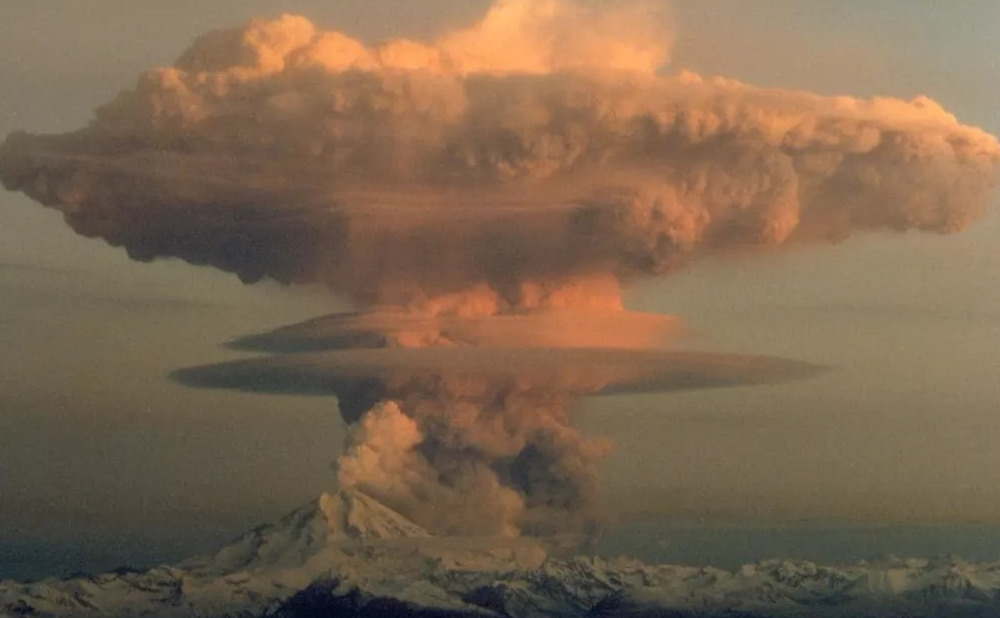
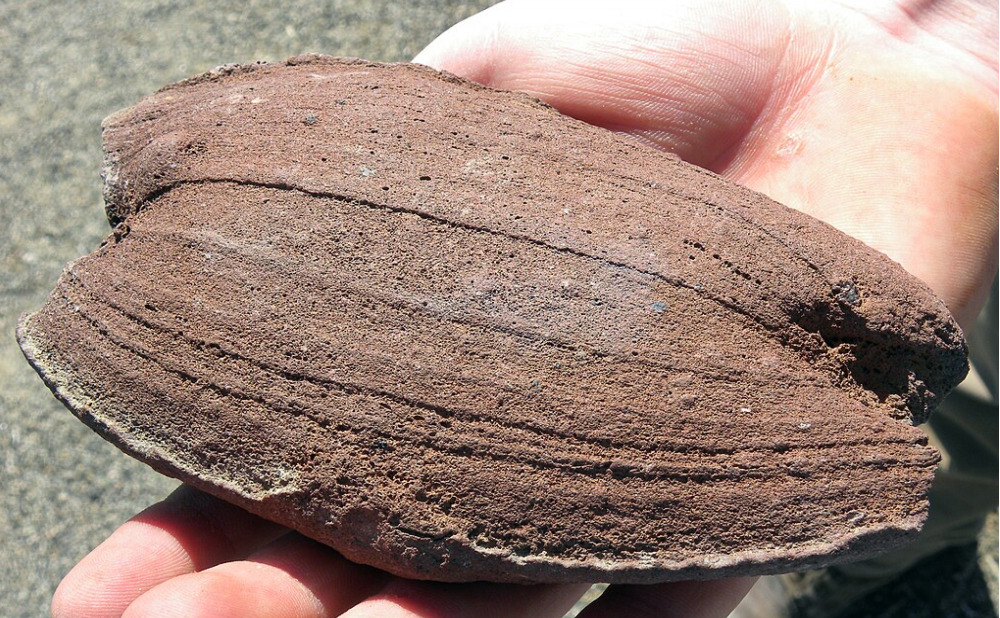

P – Examples of a large volcanic eruption (Redoubt Volcano as seen west from the Kenai Peninsula on April 21, 1990) and two “volcanic bombs”.
Only the effect of a supervolcano, as we can observe, would be enough to decimate part of the world population. But the prediction of a possible supernova, like Antares, is a number of similar environmental catastrophes multiplied over a period of time that is approximately 7 years. So several eruptions of intensity VEI 7 or even VEI 8 and earthquakes in every location could also bring humanity to its end.
Conclusions
I repeat that obviously everything I have written is a theory, but it is a theory that fits from every point of view and which seems to me to have no gaps. Precisely because I saw that there is a lot of evidence, after several years, I decided to publish this site.
Approximately every 10 thousand 20 thousand years on average on an inhabited planet in the galaxy such an event occurs (Here a nice precise calculation based on the stars of a galaxy and the number of supernovae that explode there would be useful). On some more violent and on others milder, but it is always a strong change. However, those civilizations that manage to reach higher levels of behavior and science (the real one, not the one that today has become a totem before which many kneel) can avoid disappearing simply by moving far away from the supernova, or by making sure to prepare and protect everyone.
This is what man should do today, all united, with love, to try to save himself. But from the reactions that have taken place after the last (psycho) pandemic, it seems to me that man lacks courage and loyalty. In my opinion it is destined for the end that is reserved for those civilizations that are not “ready” in the galaxy.
I end here in the hope that no one takes these words personally or gets overly scared. I myself wouldn't know how to survive and I leave everything in God's hands.


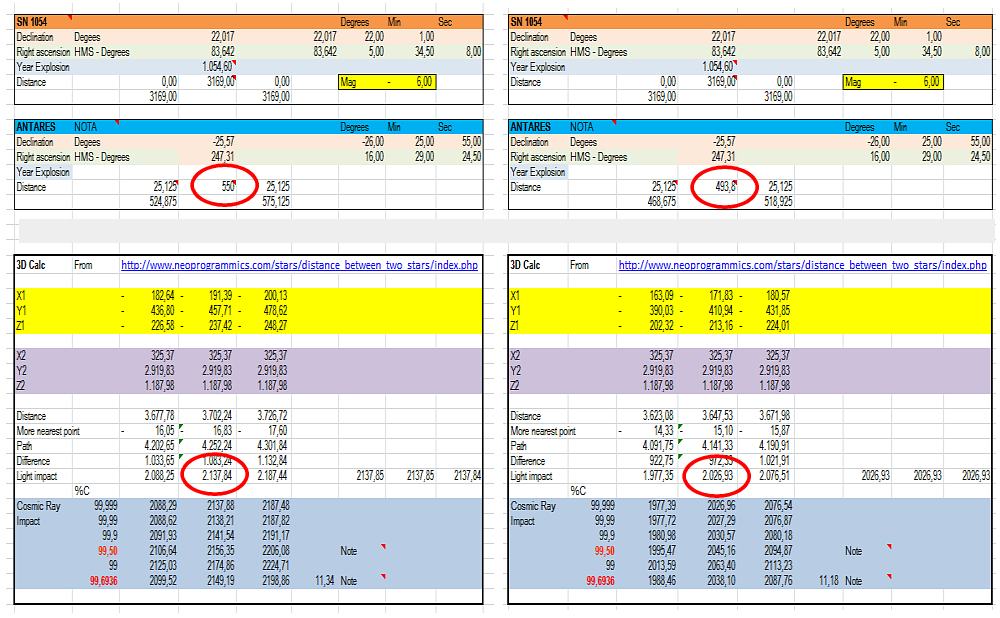
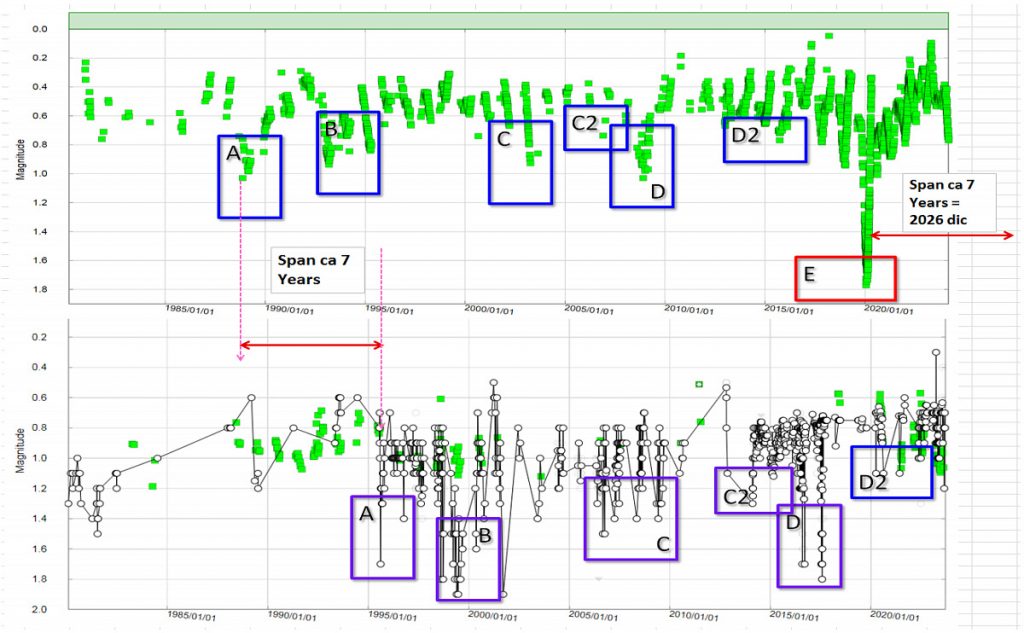
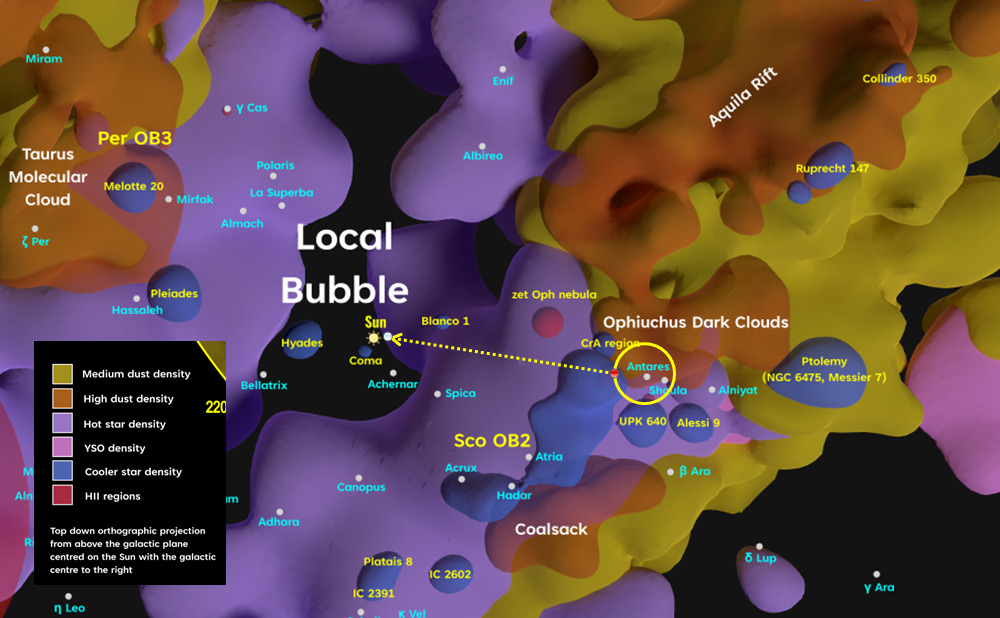
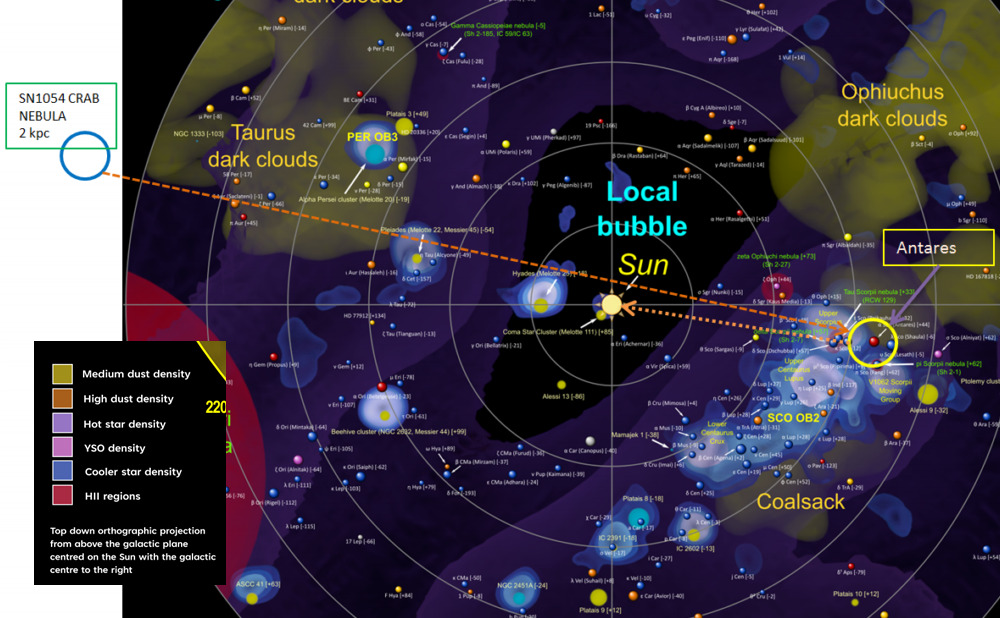
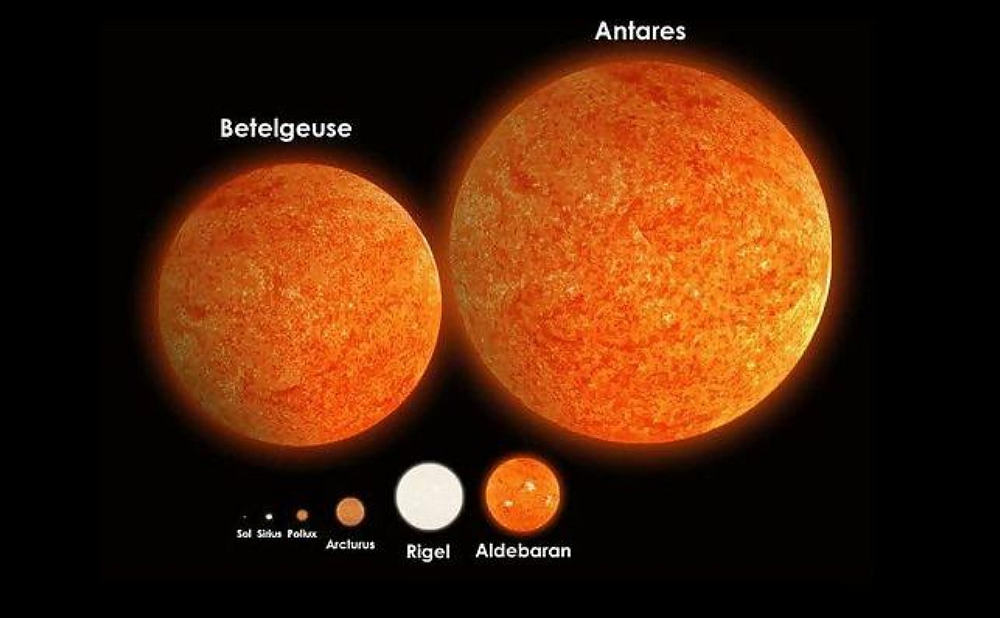
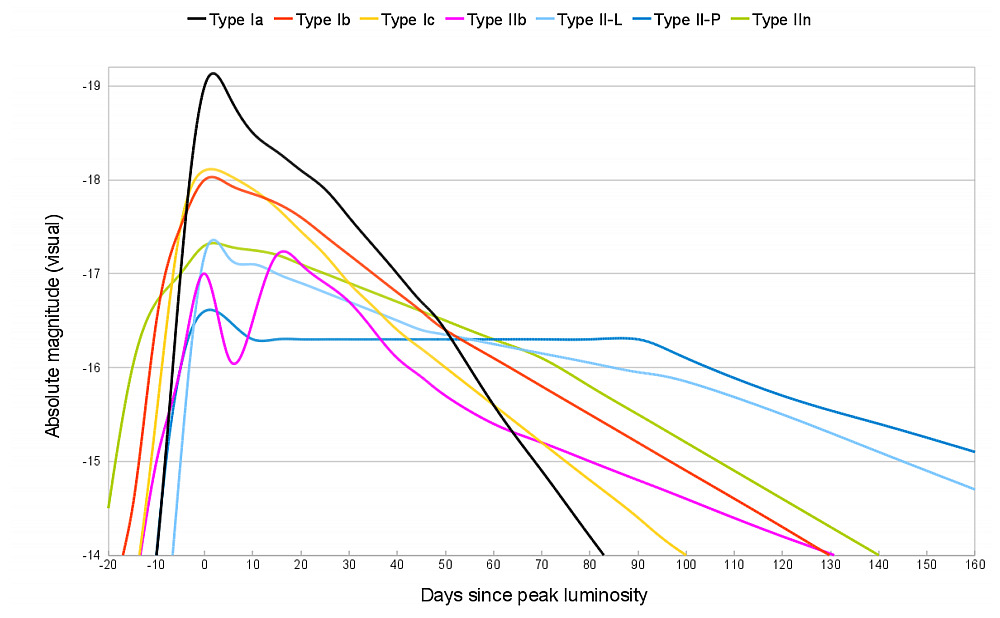
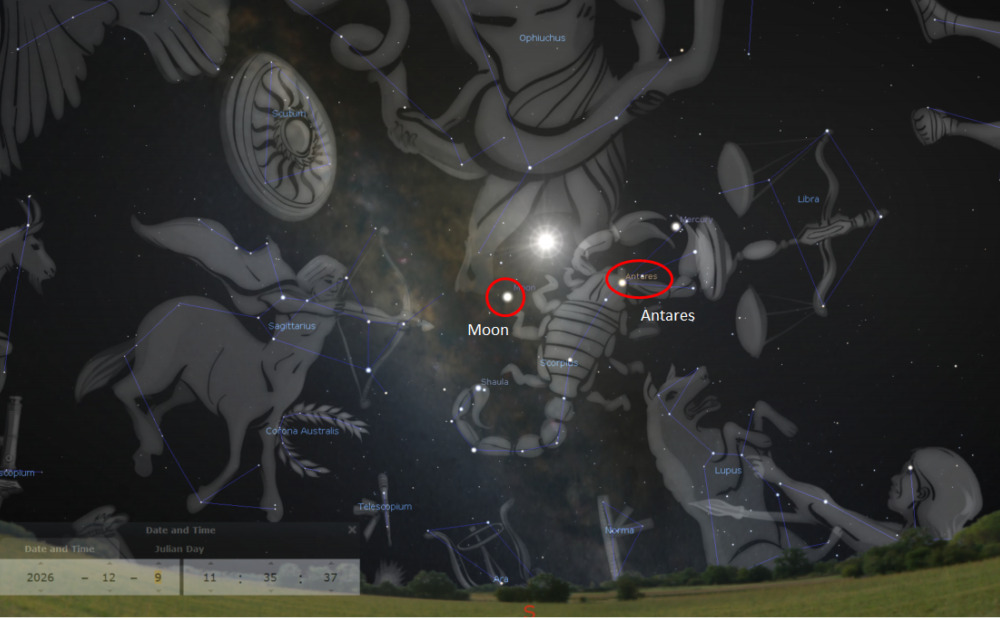
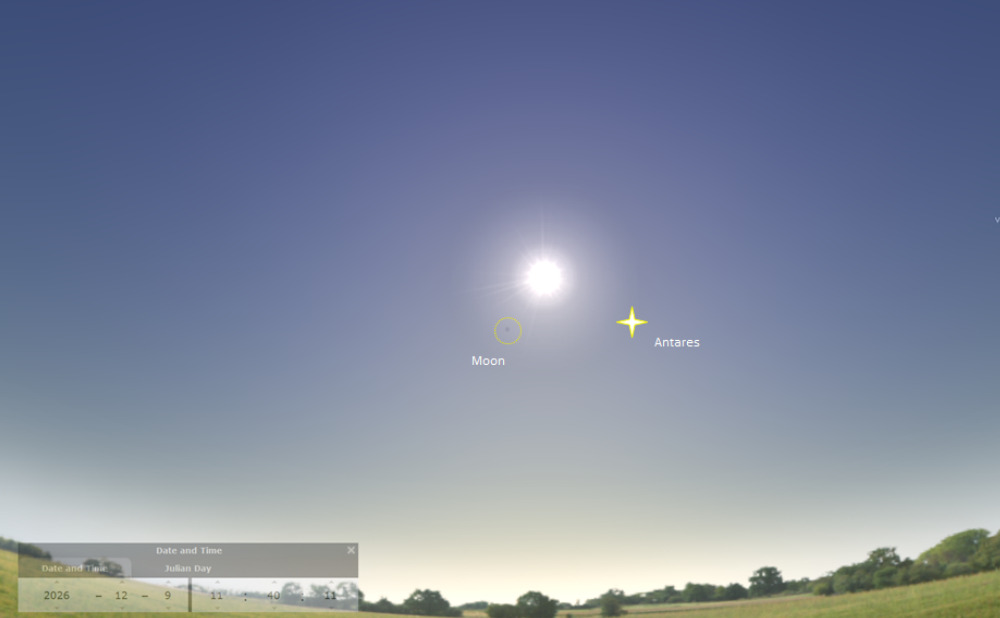
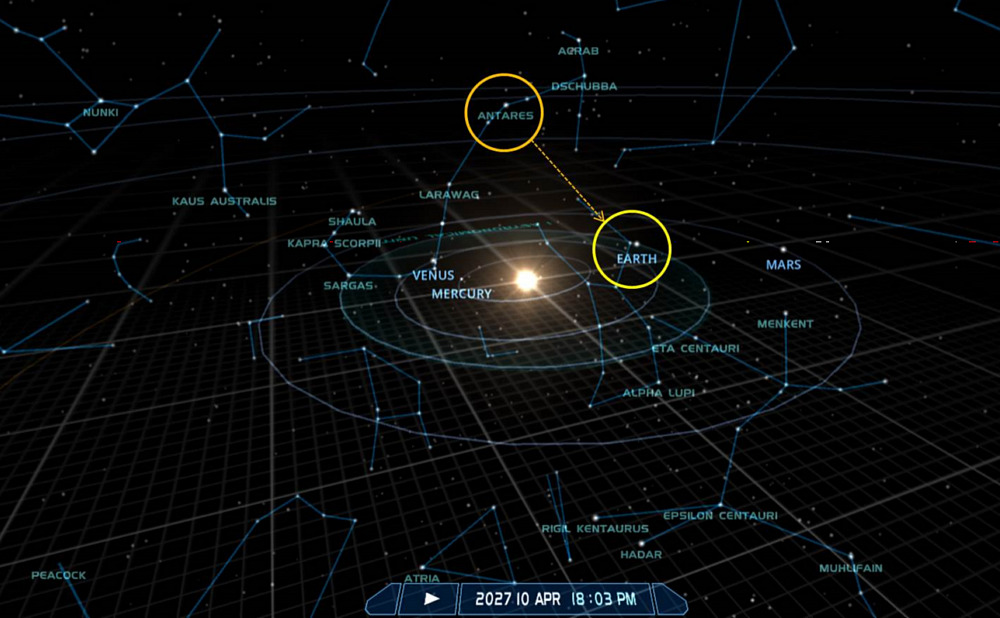
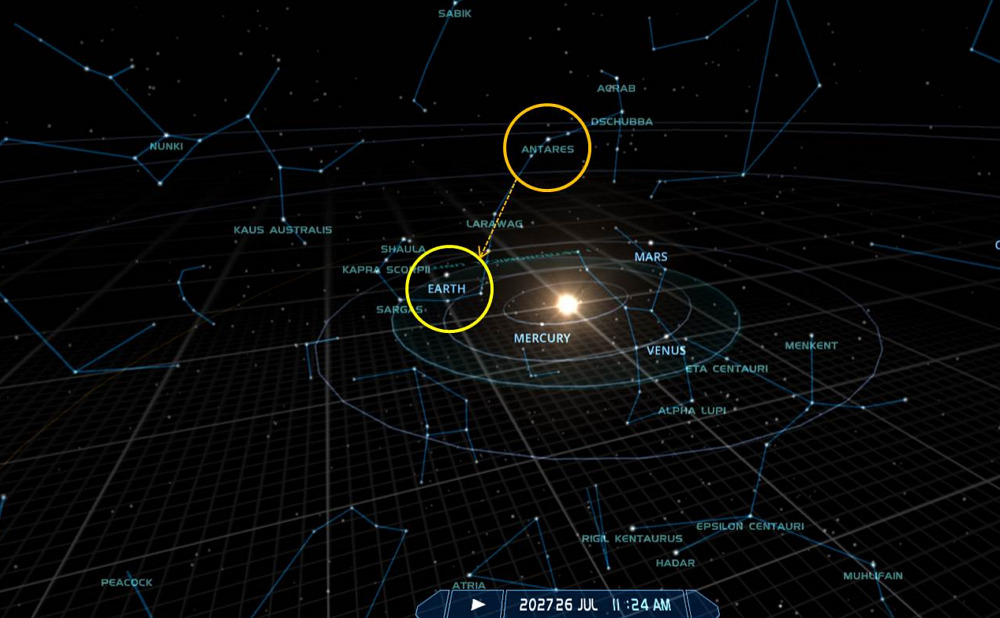
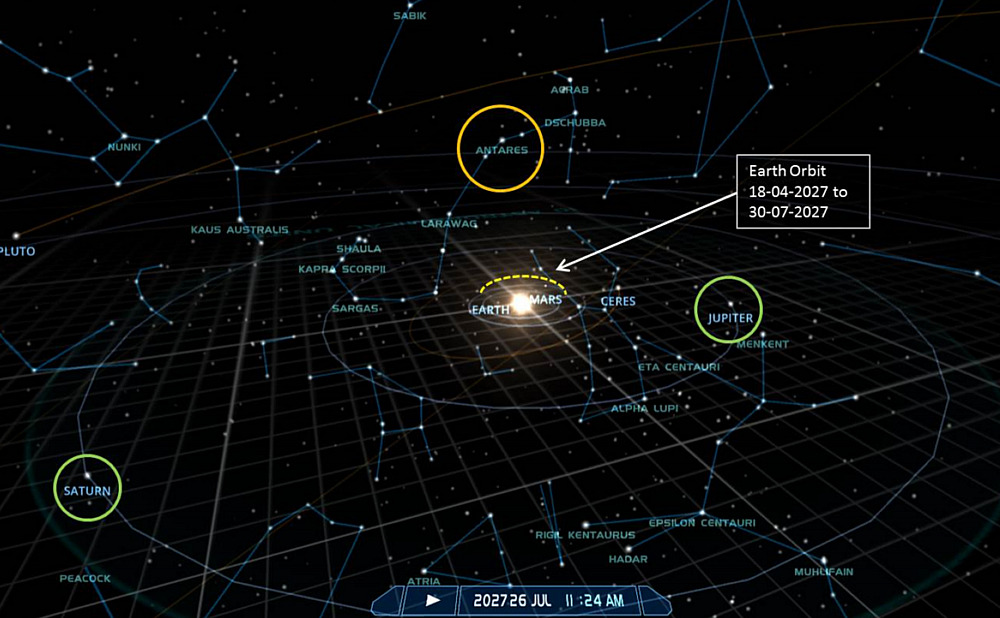
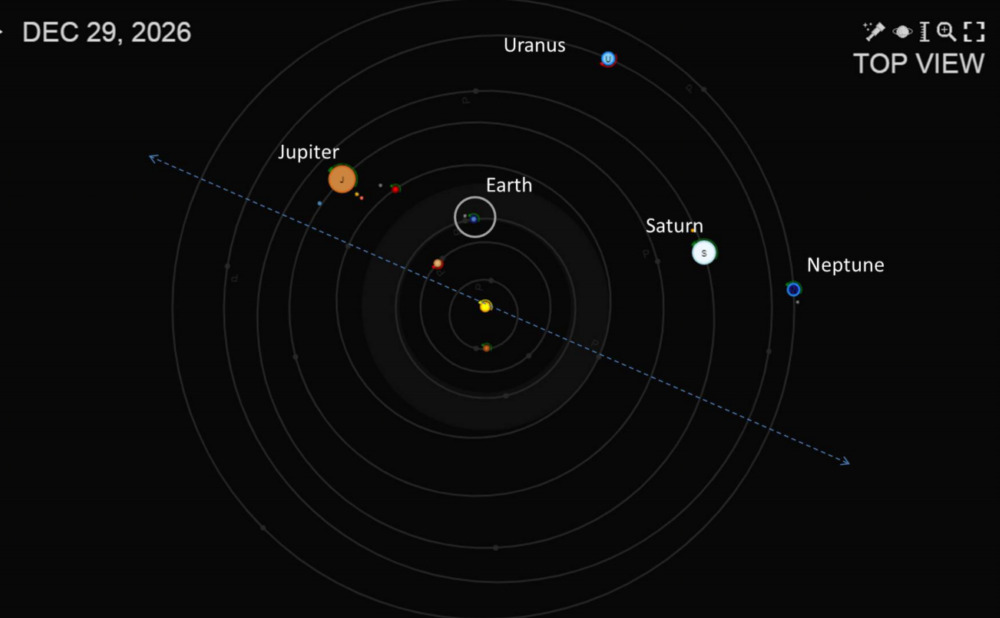
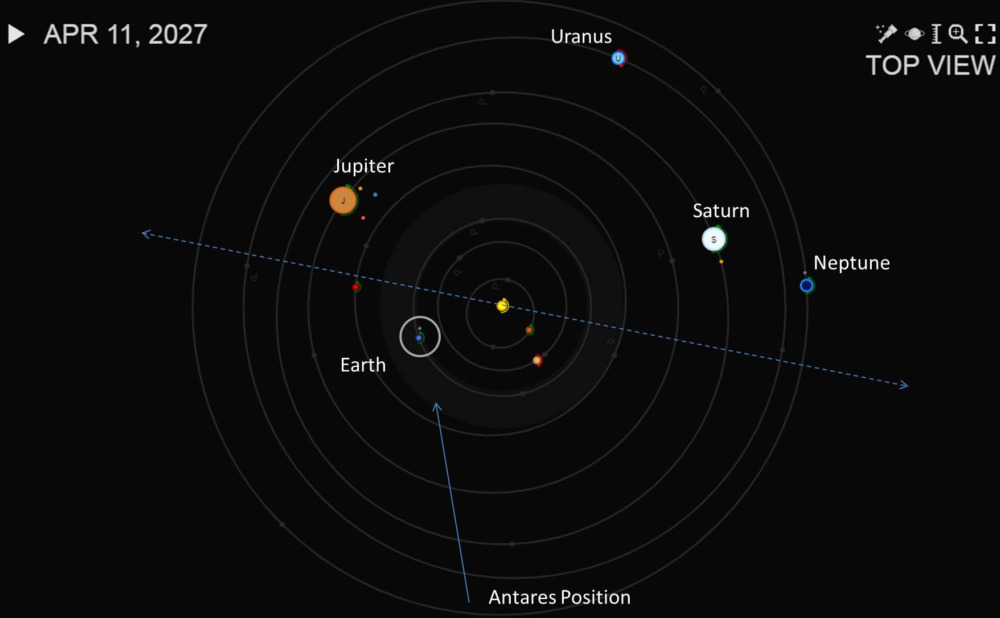
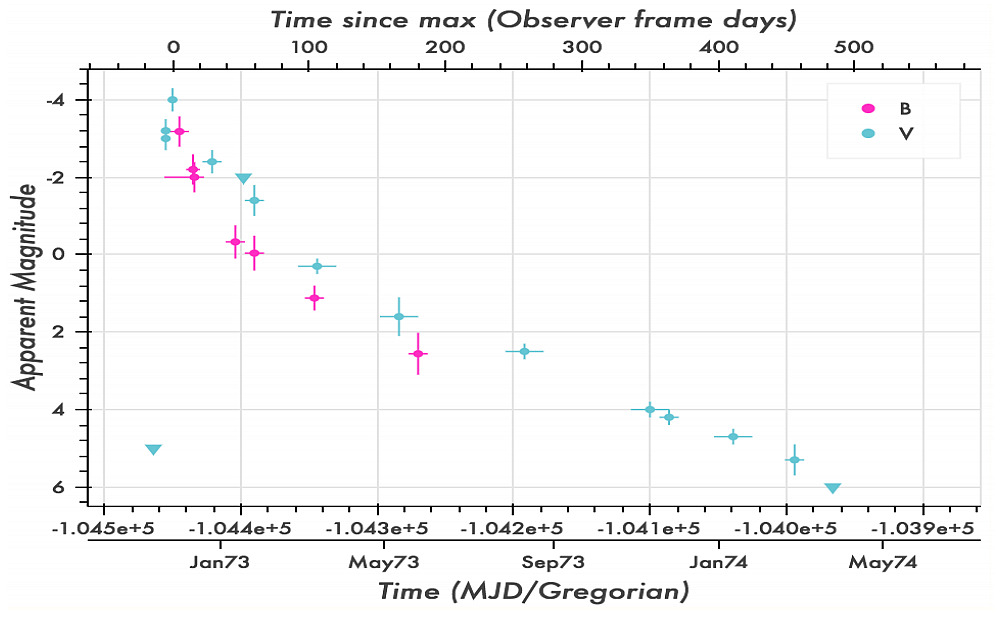
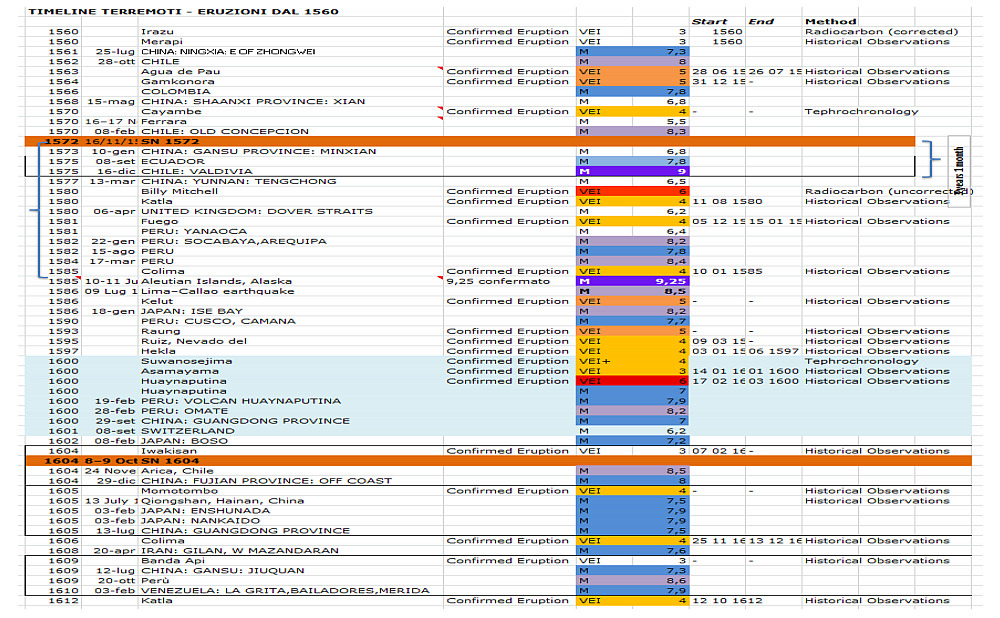
Leave a Reply